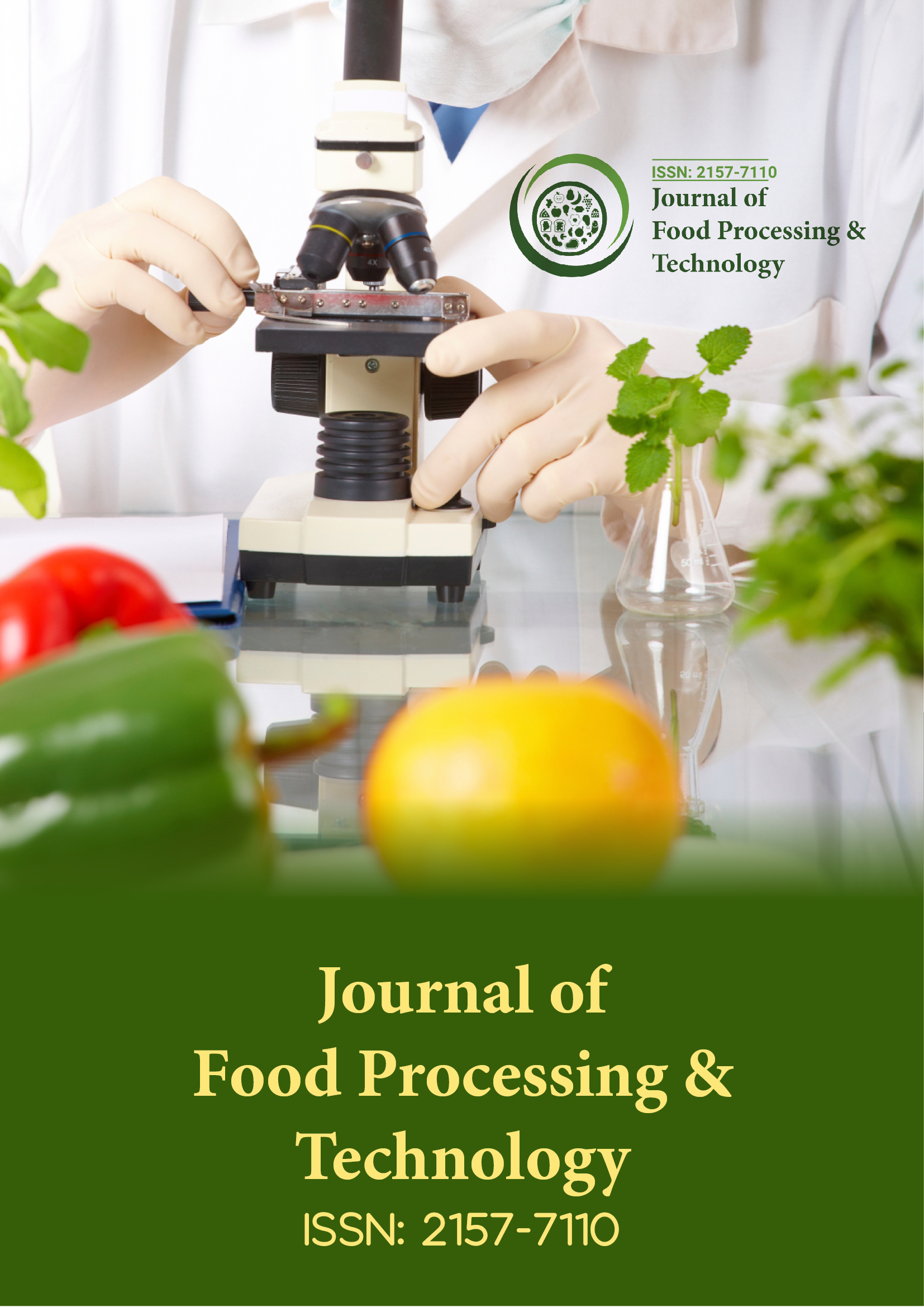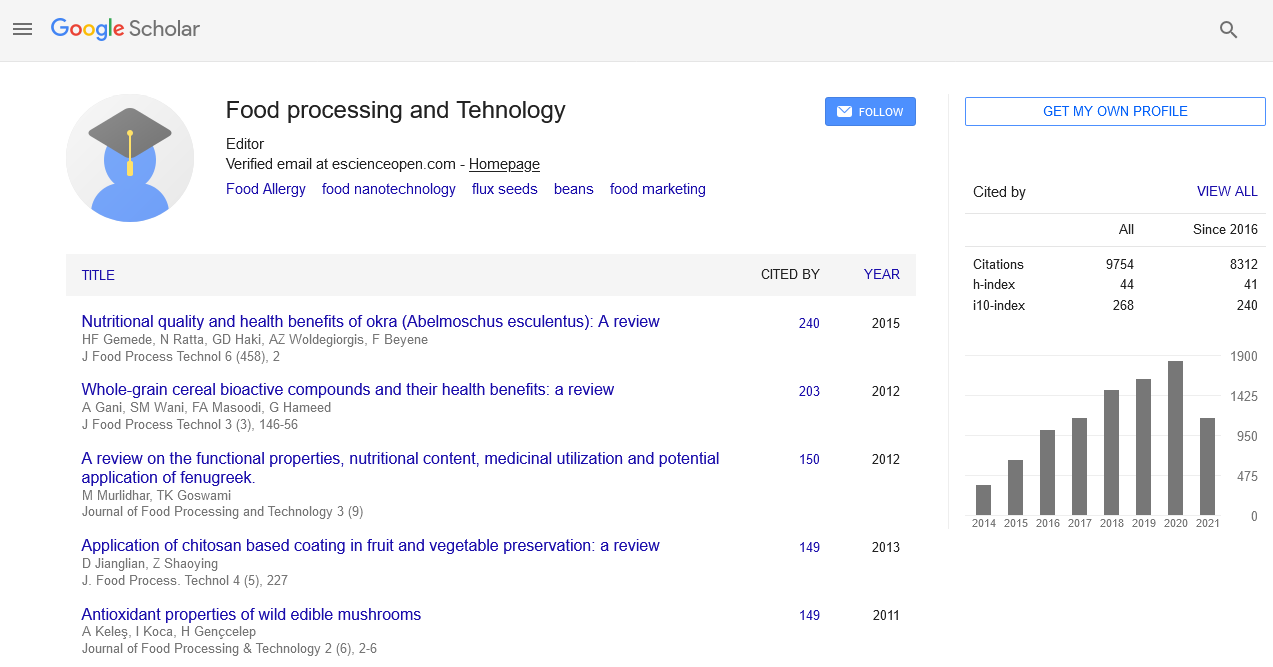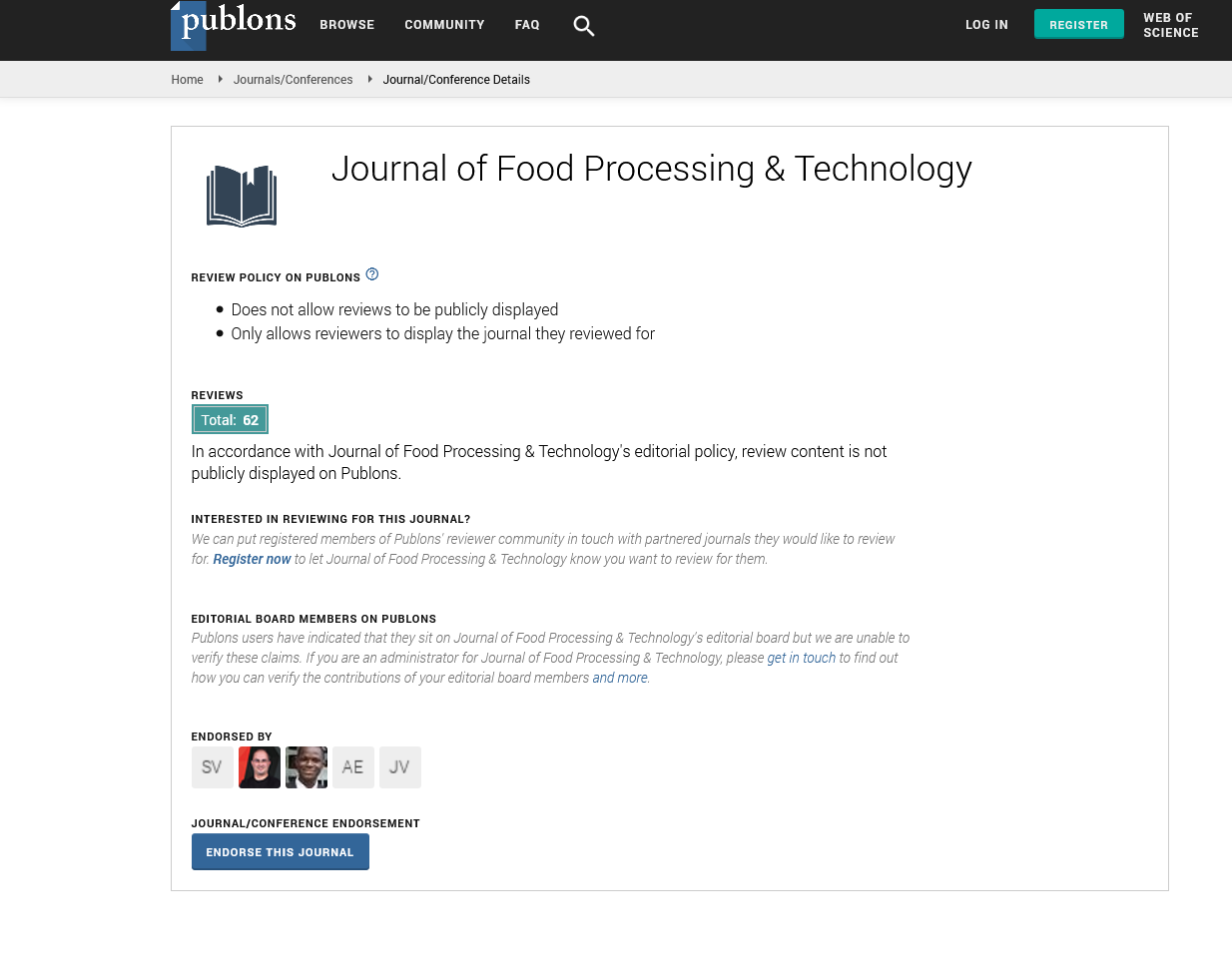Indexed In
- Genamics JournalSeek
- Academic Keys
- JournalTOCs
- China National Knowledge Infrastructure (CNKI)
- Access to Global Online Research in Agriculture (AGORA)
- Centre for Agriculture and Biosciences International (CABI)
- RefSeek
- Directory of Research Journal Indexing (DRJI)
- Hamdard University
- EBSCO A-Z
- OCLC- WorldCat
- Scholarsteer
- SWB online catalog
- Publons
- Euro Pub
- Google Scholar
Useful Links
Share This Page
Journal Flyer

Open Access Journals
- Agri and Aquaculture
- Biochemistry
- Bioinformatics & Systems Biology
- Business & Management
- Chemistry
- Clinical Sciences
- Engineering
- Food & Nutrition
- General Science
- Genetics & Molecular Biology
- Immunology & Microbiology
- Medical Sciences
- Neuroscience & Psychology
- Nursing & Health Care
- Pharmaceutical Sciences
Perspective - (2024) Volume 15, Issue 5
Fermentation Biotechnology: Transforming Food Production and Nutrition for a Sustainable Future
Jonathan Sarin*Received: 30-Sep-2024, Manuscript No. JFPT-24-26891; Editor assigned: 03-Oct-2024, Pre QC No. JFPT-24-26891 (PQ); Reviewed: 17-Oct-2024, QC No. JFPT-24-26891; Revised: 24-Oct-2024, Manuscript No. JFPT-24-26891 (R); Published: 31-Oct-2024, DOI: 10.35248/2157-7110.24.15.1128
Description
Fermentation biotechnology represents a innovative fusion of ancient practices and modern science, revolutionizing food production and enhancing nutritional value. This innovative field uses the natural metabolic processes of microorganisms to transform raw ingredients into a wide range of food products, improving both their safety and nutritional profile. The impact of fermentation biotechnology on food production its benefits for nutritional value and its potential to address contemporary challenges in food security and health. Fermentation is a biological process in which microorganisms, such as bacteria, yeast and fungi, break down organic compounds, typically carbohydrates, into simpler substances. This process can occur in the absence of oxygen (anaerobic) or, less commonly, in the presence of oxygen (aerobic). Fermentation is central to biotechnology because it harnesses microbial metabolism to produce valuable food products, enhance flavors, preserve food and improve nutritional content.
Transforming food production
Fermentation biotechnology has revolutionized food production in several key ways:
Enhanced food preservation: Fermentation has long been used as a method for preserving food. By converting sugars into acids, alcohol or gases, fermentation inhibits the growth of spoilage microorganisms and pathogens. This not only extends the shelf life of foods but also reduces the need for artificial preservatives. Traditional fermented foods like sauerkraut, kimchi and pickles have been staples in many cultures for centuries, thanks to their preserved nature.
Production of diverse food products: Fermentation biotechnology has enabled the production of a wide array of food products. From dairy items like yogurt and cheese to beverages like beer and wine, fermentation transforms basic ingredients into culturally and economically significant products. Modern biotechnology has expanded these possibilities, leading to innovations such as plant-based dairy alternatives and low-alcohol beers, catering to diverse dietary needs and preferences.
Improved food safety: Fermentation can improve food safety by reducing the risk of foodborne illnesses. The acidic environment produced during fermentation inhibits the growth of harmful bacteria, such as Salmonella and E. coli. Additionally, the production of antimicrobial compounds by certain micro- organisms during fermentation can further enhance food safety. For example, the lactic acid bacteria used in the fermentation of fermented vegetables produce lactic acid, which helps prevent the growth of spoilage organisms.
Sustainable food production: Fermentation biotechnology contributes to sustainable food production by reducing waste and improving resource efficiency. Microorganisms can utilize agricultural by-products and food waste as substrates for fermentation, turning these materials into valuable products. For instance, brewer’s spent grain, a by-product of beer production, can be fermented to produce animal feed or biofuels. This approach not only minimizes waste but also creates new economic opportunities.
Enhancing nutritional value
Fermentation biotechnology plays an essential role in improving the nutritional value of foods:
Increased bioavailability of nutrients: Fermentation can enhance the bioavailability of nutrients, making them easier for the body to absorb. For example, the fermentation of soybeans to produce tempeh increases the availability of proteins and essential amino acids. Additionally, fermentation can break down complex carbohydrates and phytates, compounds that can inhibit the absorption of minerals such as iron and zinc, thereby improving mineral bioavailability.
Production of beneficial compounds: Fermentation can produce beneficial compounds that contribute to health. Probiotics are live microorganisms that, when ingested in sufficient quantities, provide health benefits. Fermented dairy products like yogurt and kefir are rich in probiotics, which can support digestive health, boost the immune system and potentially reduce the risk of certain diseases.
Reduction of anti-nutrients: Certain foods contain anti- nutrients compounds that can interfere with the absorption of essential nutrients. Fermentation can diminish the levels of these antinutrients. For example, the fermentation of cereals and legumes can decrease the content of phytic acid, which binds minerals and reduces their bioavailability. By reducing anti-nutrient levels, fermentation helps improve the nutritional quality of foods.
Development of functional foods: Fermentation biotechnology has led to the creation of functional foods that offer additional health benefits beyond basic nutrition. For example, the fermentation of certain grains and vegetables can produce bioactive peptides with antioxidant, anti-inflammatory, or antihypertensive properties. These functional foods can play a role in preventing and managing chronic health conditions, such as hypertension and diabetes.
Fermentation biotechnology is transforming food production and enhancing nutritional value in profound ways. By using microbial processes, fermentation biotechnology improves food safety, extends shelf life and creates diverse and nutrient-rich products. Its role in addressing contemporary challenges, such as food security, waste reduction and sustainable agriculture, underscores its importance in the future of food. As technology continues to advance, fermentation biotechnology to deliver innovative solutions that support health and well-being while contributing to a more sustainable food system.
Citation: Sarin J (2024). Fermentation Biotechnology: Transforming Food Production and Nutrition for a Sustainable Future. J Food Process Technol. 15:1128.
Copyright: © 2024 Sarin J. This is an open-access article distributed under the terms of the Creative Commons Attribution License, which permits unrestricted use, distribution, and reproduction in any medium, provided the original author and source are credited.


